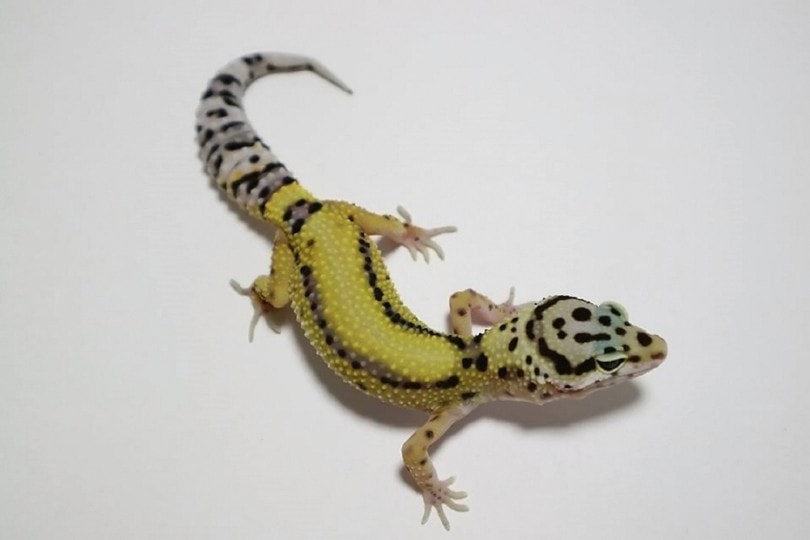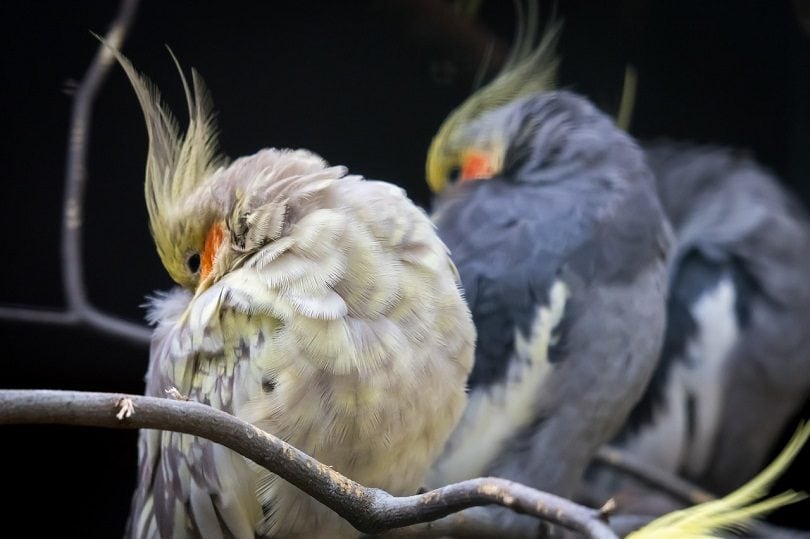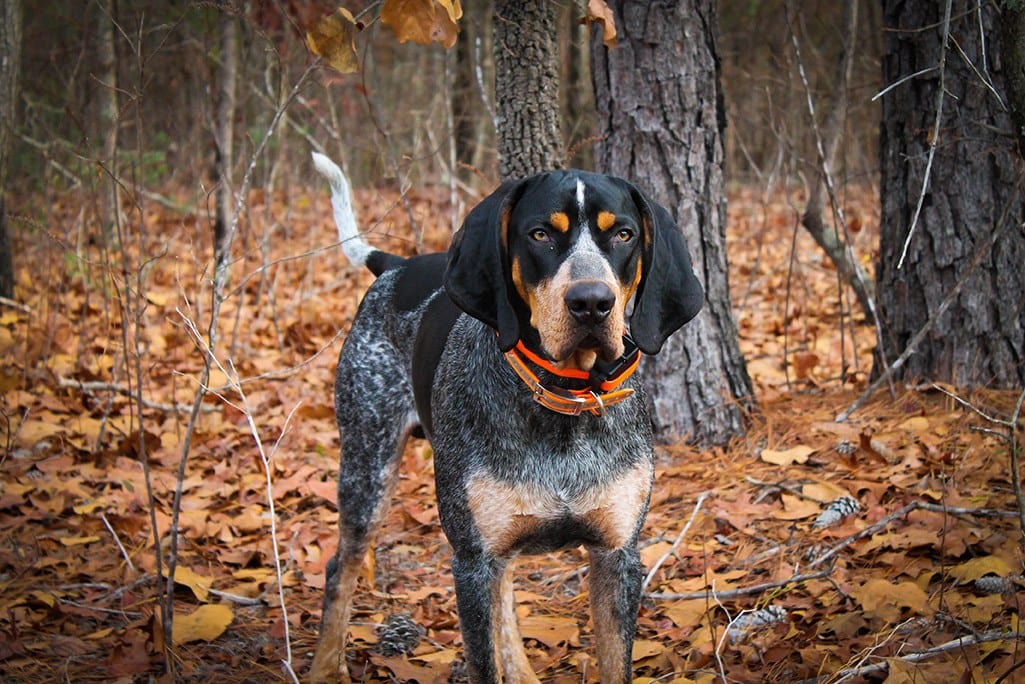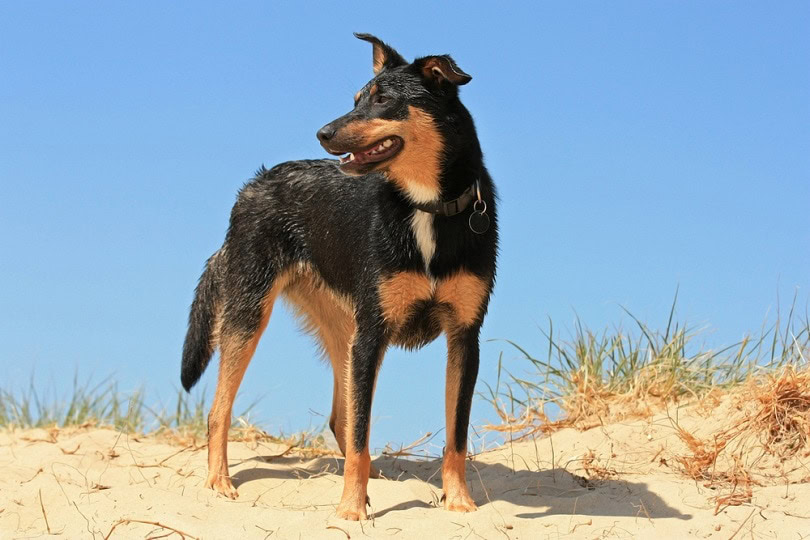Click to Skip Ahead
The beautiful lavender leopard gecko has a light purple or lavender base color with stripes or spots of different colors. This gecko is great for beginners and has easy care requirements. They have bubbly personalities and frequently move about their habitats. If you are considering bringing a lavender leopard gecko into your family read on for more information about this striking creature.

Quick Facts About the Lavender Leopard Gecko
| Species Name: | Eublepharis macularius |
| Common Name: | Lavender Leopard Gecko |
| Care Level: | Beginner |
| Lifespan: | 20 or more years |
| Adult Size: | 8–10 inches |
| Diet: | Insects |
| Minimum Tank Size: | 15-gallon tank |
| Temperature & Humidity: | 88°F basking spot with 75°F temperature gradient 30–40% humidity level |
Do Lavender Leopard Geckos Make Good Pets?
Lavender leopard geckos make great pets as they are hardy and easy to handle. They are very docile and can be tamed with regular interaction. They do not require extensive habitat maintenance and are very lenient if something is not done perfectly well. They love to move around their habitat and are interesting to watch.
Appearance
The lavender leopard gecko has a lavender or purple base color with spots or stripes of black. This lavender color will appear in large spots or stripes over a mostly yellow body. Don’t get too attached to their lavender color, though, as some geckos lose their lavender color as they age.

How to Take Care of Lavender Leopard Geckos
Habitat, Tank Conditions & Setup
Tank
A 15 to 20-gallon tank will serve well as a habitat for your gecko. You can even house up to three geckos in a tank of that size. Be sure to only house one male per enclosure and only mix males and females if you are prepared to deal with breeding.
You should provide hiding logs for them to climb on and hide in. The enclosure should be spot cleaned once a day to remove feces and completely cleaned once a month. You should remove all substrate and take out and scrub all items in the enclosure at this time.
Lighting
Lavender leopard geckos are nocturnal and do not need a great deal of UV light. A small amount of UVA and UVB light will be sufficient. You should provide about 14 hours of lighting during the summer and 12 hours of lighting during the winter.
Heating (Temperature & Humidity)
Reptiles self-regulate their temperatures so there should be a temperature gradient in your enclosure. There should be a basking spot and the other end of the tank should be slightly lower in temperature. The basking spot can be achieved with a regular white incandescent heat bulb and should produce a temperature of about 88°F. The other end of the tank should be about 75°F. The nighttime temperature can drop to 70-75°F. Using a red, blue, or purple heat bulb at night can achieve this.
The humidity level in your enclosure should be about 30-40%, which about mimics the humidity level in your own home. By using a screen top on the enclosure this should be achieved. You can measure the humidity to be sure by using a humidity gauge.
Substrate
Paper is the best type of substrate to use. You should not use sand as the gecko can ingest it. Also, avoid wood shavings as it can cut the geckos feet. Whatever substrate you use be sure that your gecko is not ingesting it as it can cause an intestinal blockage.
| Tank Recommendations | |
| Tank Type: | 15–20-gallon glass tank |
| Heating: | White incandescent bulb |
| Best Substrate: | Paper bedding |

Feeding Your Lavender Leopard Gecko
The lavender leopard gecko is an insectivore, meaning they eat mostly insects. You should feed them a variety of crickets and waxworms. Twenty-four hours prior to feeding you should gut load the insects, or feed them a nutritious meal. This will help provide the maximum amount of nutrients to your gecko. For adult geckos, you should coat the insects in a calcium and vitamin D3 supplement every other feeding. For juveniles, they should be coated every feeding.
There should always be a shallow dish of water in your gecko’s enclosure for them to drink from and soak in. This dish should be cleaned and refilled daily. This water will also help provide humidity to the enclosure.
| Diet Summary | |
| Fruits: | 0% of diet |
| Insects: | 100% of diet |
| Meat: | 0% of diet |
| Supplements Required: | Calcium and vitamin D3 |
Keeping Your Lavender Leopard Gecko Healthy
Common Health Issues
There are some common health issues you should watch out for in your lavender leopard gecko.
- Metabolic bone disease. This disease is caused by a lack of calcium and vitamin D. Tremors and poor appetite signal that this disease may be present.
- Armpit bubbles. Overweight geckos can store fat, vitamins, proteins, and other minerals in their armpits causing bubbles. These are harmless and should go away once your gecko returns to a normal weight.
- Gastroenteritis. This is caused by a bacterial infection. Signs of it include tail shrinkage and watery feces. This can be fatal so talk to your vet right away if you notice these signs.
Lifespan
These lizards are a long-term responsibility. They can live for twenty years or longer. Be sure to consider their long lifespan before bringing one on as a pet.
Are Lavender Leopard Geckos Friendly? Our Handling Advice
Lavender leopard geckos can become very friendly if interacted with on a regular basis. They do not tend to be biters, so they can be handled with ease. Be careful not to overdo your handling as they can become stressed.
Shedding & Brumation: What to Expect
Your lavender leopard gecko will shed once every four to eight weeks. You will be able to tell when they are about to shed as their skin will turn a gray color. You can help the process by increasing the humidity in the tank when you see this.
Brumation is similar to hibernation, in that your gecko will enter a state of semi-dormancy for a period of 30-90 days where they will not eat and will spend most of their time hiding. Not all geckos will go through brumation, and where you live and how intense the winter is will most likely affect whether or not your gecko bromates.
How Much Do Lavender Leopard Geckos Cost?
Lavender leopard geckos are pricier than other geckos due to their rare coloring. A lavender leopard gecko will run between $150-$500. A young gecko will be much cheaper than an adult gecko.
Lavender Leopard Gecko Pros & Cons
- Can be housed with other leopard geckos
- Hardy to most environments
- Docile
- Should not be overhandled
- May brumate in winter months

Final Thoughts
The lavender leopard gecko is a great gecko for a beginner. They are docile and easy to handle and rarely bite. They love to move around their enclosure and can be very interesting to observe. They are hardy animals and will not complain if conditions aren’t perfect in their environment. Overall, this gecko is a great pet for those looking for a low-maintenance beautiful gecko.
See also: Do Leopard Geckos Pee?
Featured Image Credit: aguspurnama47, Shutterstock










